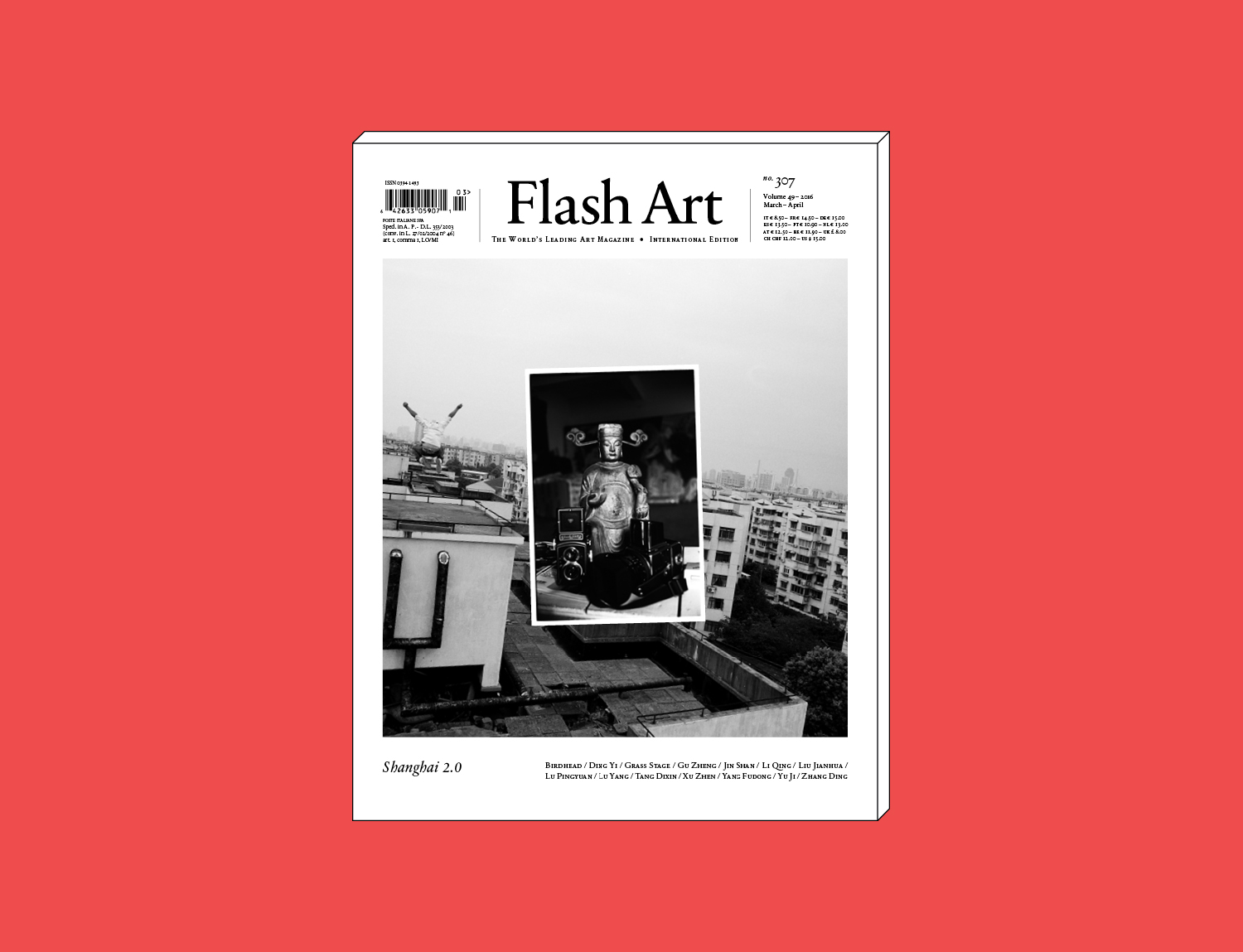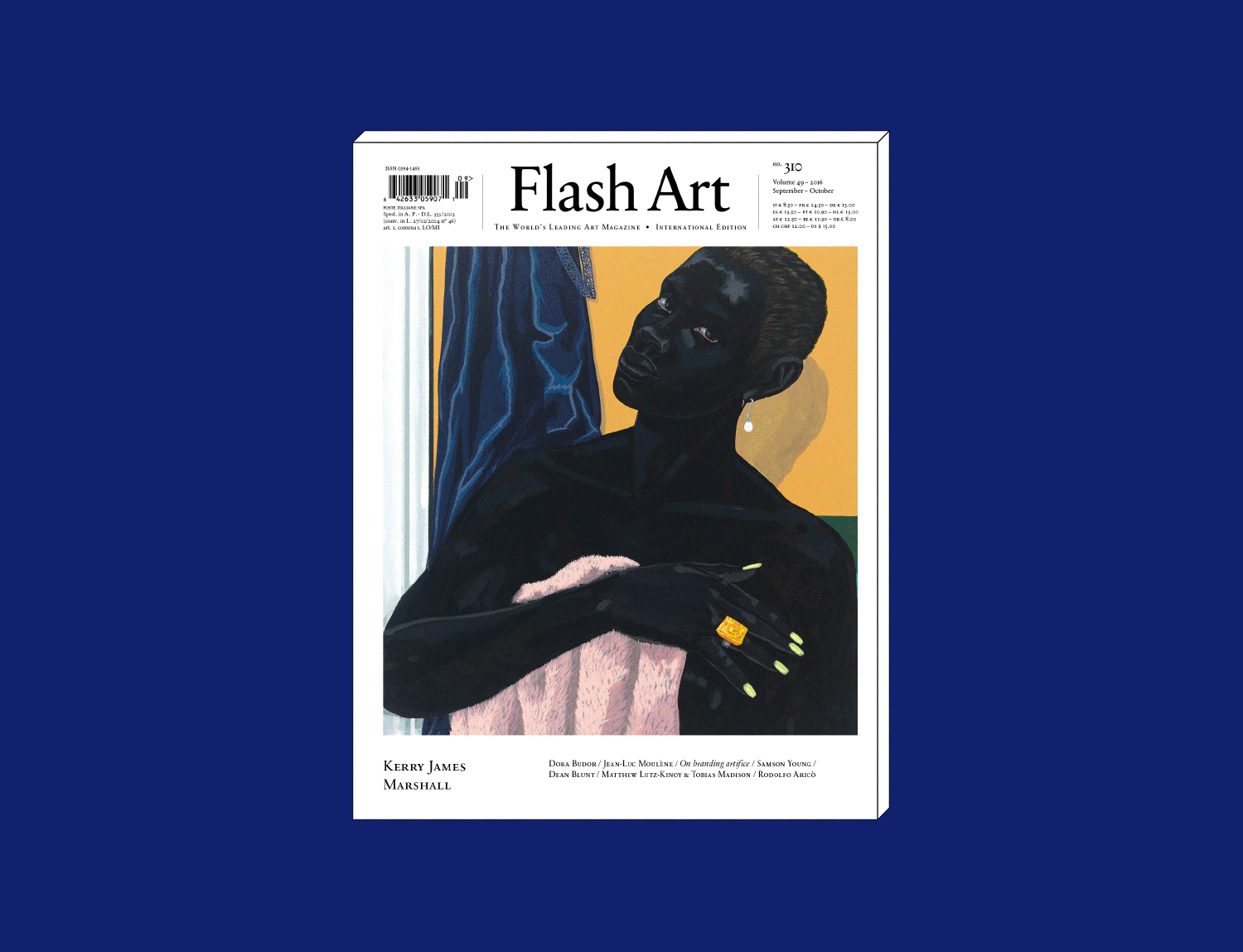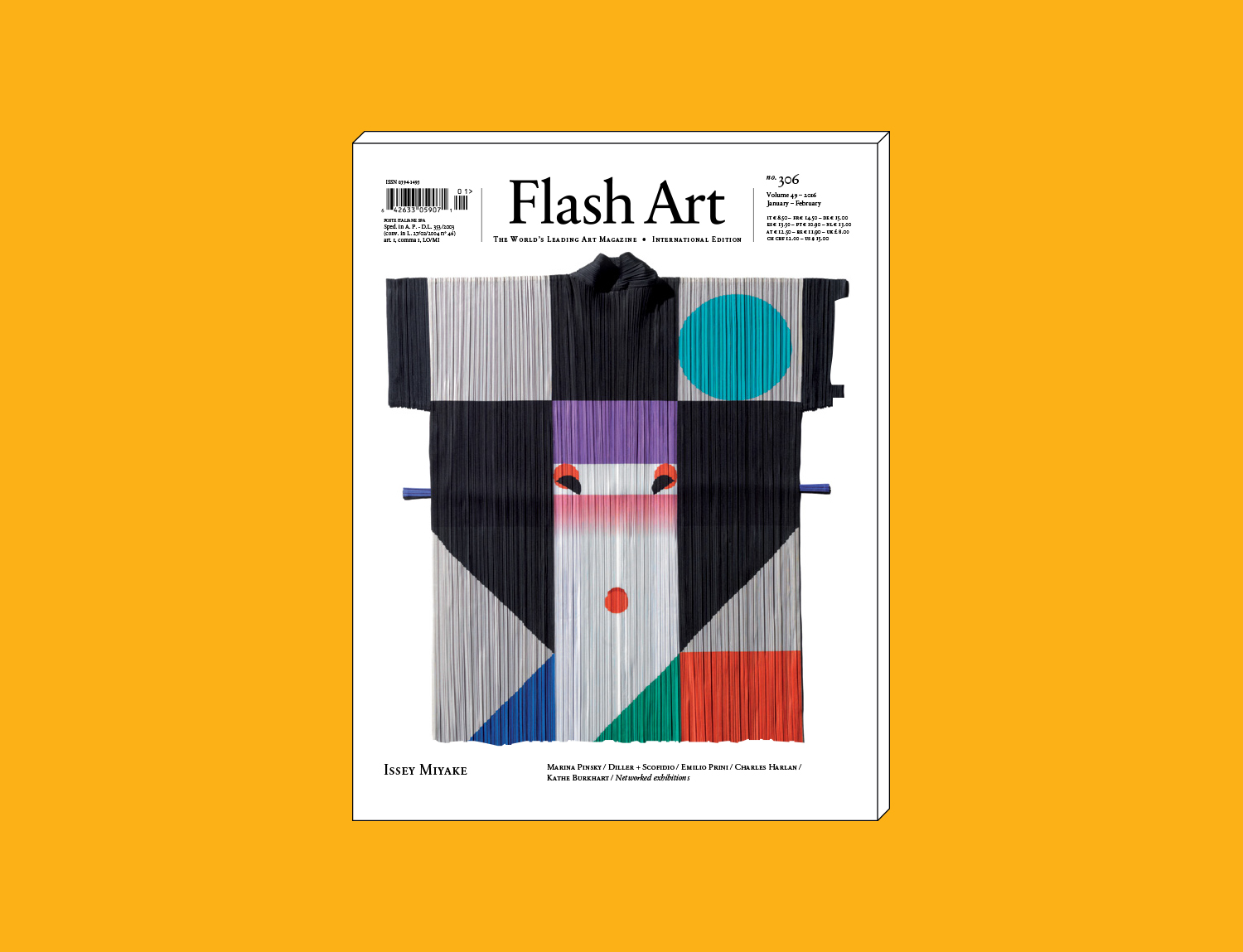We are pleased to announce that the May 2016 issue of Flash Art International is out now.
Following the death of Italian novelist, semiologist and philosopher Umberto Eco, this issue takes as its point of departure questions posed by Eco’s eponymous theory of the “open work.”Eco’s collection of essays Opera Aperta [The Open Work] was published in 1962, when chance operations and indeterminacy became constitutive elements of the creative process. In today’s cultural climate, Eco’s thinking on “openness” remains relevant to art practice and criticism, providing “an urgent, irksome protest against the organization and management of all which lives,” as British artist Cally Spooner writes in this issue’s “Macro” essay.
The newly introduced “Micro” essay, placed at the end of the issue, responds to “Macro” from the perspective of Italian art, earnestly bringing into the conversation the creative panorama from which this magazine was born. Here, Michele D’Aurizio finds echoes of Eco’s theory of the “open work” in the phenomenon of Italian Radical Design. Envisioning “objects that assume shapes that become whatever the users want them to be,” Radical Design is probably the most successful but understudied embodiment of “openness” ever born on Italian soil.
The question of “openness” — and its valences — resonates throughout the entire issue, above all in our cover story devoted to American artist David Hammons. Conceived as a series of “open” questions, posed by a Wattis Institute research group under the guidance of Anthony Huberman, this feature riffs on an uncommonly raw, spiritual and politically charged art practice. Like a jazz musician, Hammons reinterprets art-making procedures in ways that result in unexpected, free-form resonances. But, as Huberman reminds us to ask: “What’s the relationship between improvisation and control? Isn’t it similar to that of a needle and thread?”
Also in this issue:
Tatiana De Pahlen talks with Bret Easton Ellis and Alex Israel about their collaborative text paintings and the centrality of Los Angeles’s landscape in both their practices.
“In Los Angeles you only think that you’re coming here to reinvent yourself. While, what actually happens is that the city forces you to become who you really are.”
— Bret Easton Ellis
Myriam Ben Salah discusses the tension between individuality and community in Mélanie Matranga’s environmental installations, objects and videos.
“By giving space to the intimate and allowing singularities to blossom, Matranga creates situations that are saturated with emotion.”
— Myriam Ben Salah
Matthew Evans talks with Bill Kouligas about the role Kouligas’s Berlin-based record label PAN plays in documenting the growing significance of music and art crossovers.
“It’s important for me to accommodate all these types of people who can’t really participate in the really specific, genre-type labels.”
— Bill Kouligas
åyr elaborates on the themes behind their upcoming installations on walls and orbs, to take place at the 9th Berlin Biennale for Contemporary Art and at the British Pavilion of the 15th Venice Architecture Biennale.
Eli Diner explores Martine Syms’s inquiries into representations of blackness.
“Syms draws her fragments from the vast store of images of black figures. She reifies them, animates them, presents momentary specificity, and each fragment, in turn, slips back into generality. Remember that hers is a show about nowhere.”
— Eli Diner
In “Time Machine”:
In a late-in-life interview with Alan Jones, from Flash Art International no. 140, May–June 1988, William N. Copley discusses his inspirations and working methods.
“Had I taken painting seriously I don’t think I would have had the freedom that I started with. If you know what art isn’t, the whole world is before you.”
— William N. Copley
In “Reviews”:
Fischli and Weiss at the Guggenheim, New York; Adam McEwen at Petzel, New York; Olivia Erlanger at What Pipeline, Detroit; Mathieu Malouf at Jenny’s, Los Angeles; Nathaniel Mellors at The Box, Los Angeles; Jorge Macchi at MALBA, Buenos Aires; Das Institut at Serpentine Sackler Gallery, London; Jesse Darling at Arcadia Missa, London; Elif Erkan at Weiss Berlin; Ceal Floyer at the Aargauer Kunsthaus, Aarau; “The Playground Project” at the Kunsthalle Zurich; Oscar Tuazon at Chantal Crousel, Paris; Guy de Cointet at Culturgest, Lisbon; Lorenzo Scotto di Luzio at T293, Rome; Evgeny Granilshchikov at the Multimedia Art Museum, Moscow; Hemali Bhuta at Project 88, Mumbai; “Digging a Hole in China” at OCAT Shenzhen; Miho Dohi at Hagiwara Projects, Tokyo.
Flash Art will be part of the “Reading Room” at the next edition of Frieze New York (May 5–8).





